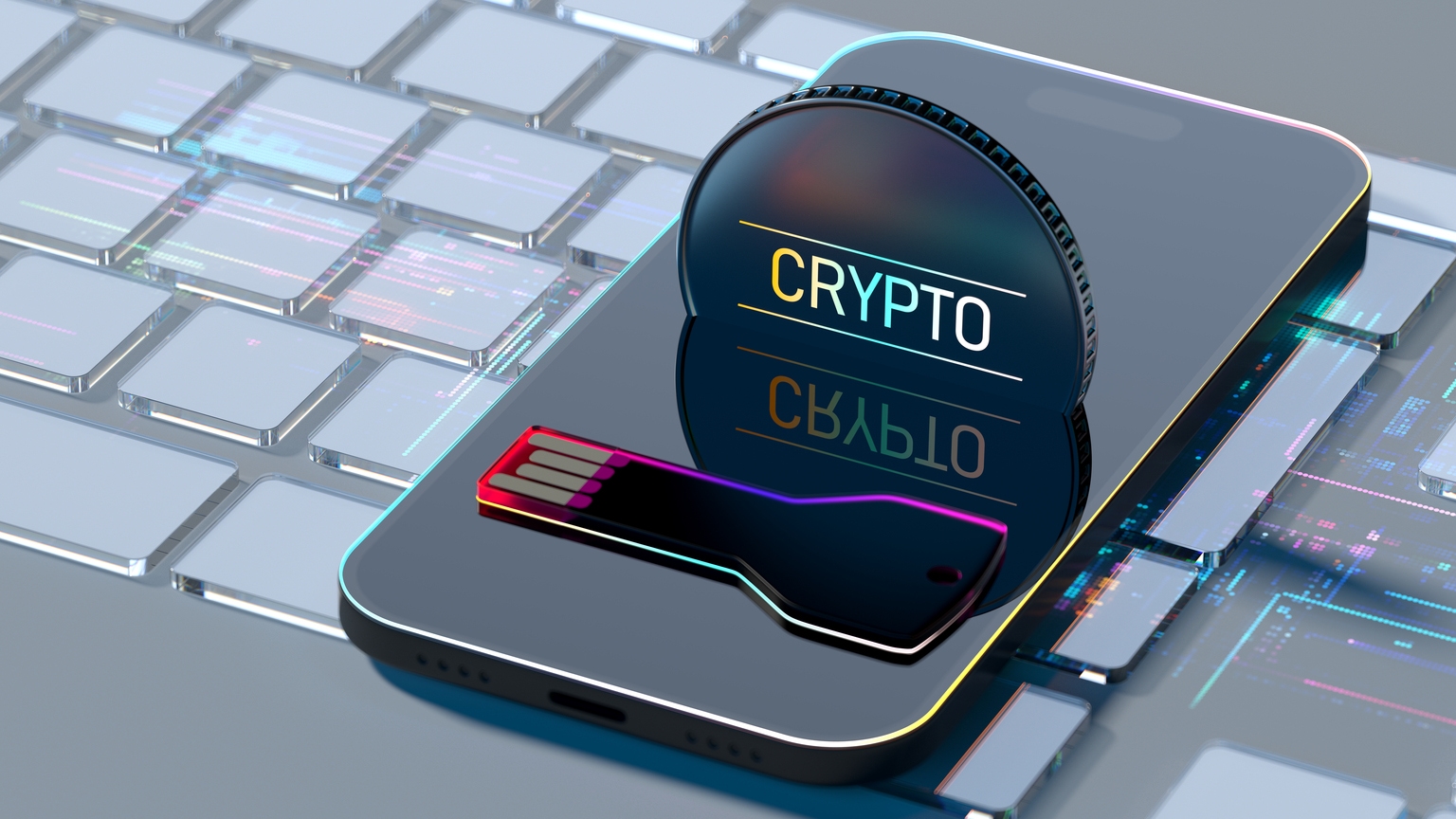
© 2025 Coinspeaker LTD. ALL RIGHTS RESERVED.
As Pi Coin edges closer to public trading, the crypto community is watching closely. This deep-dive analysis examines Pi’s unique value proposition, key milestones, and price forecasts — from short-term volatility to long-term adoption potential in a fast-evolving blockchain landscape.
As blockchain adoption accelerates, new crypto projects are emerging with bold ambitions to redefine how digital currencies are mined, used, and distributed. Among these, Pi Network has captured global attention for its mobile-first approach and rapidly growing user base. While still in its early development phase, Pi Coin has sparked widespread curiosity and debate within the crypto community, not only for its unconventional mining model but also for its potential to challenge traditional assumptions about accessibility and decentralization.
In this comprehensive analysis, we explore the future of Pi Coin through the lens of market dynamics, price forecasts, technological progress, and investor sentiment. From its current network status to potential exchange listings and long-term adoption scenarios, this article aims to provide a balanced view of what lies ahead for one of the most talked-about emerging digital assets.
As the cryptocurrency ecosystem expands beyond traditional assets like Bitcoin and Ethereum, new projects are emerging with a focus on accessibility, mobile-first solutions, and mass adoption. One such initiative is the Pi Network — a crypto project that has attracted significant global interest by reimagining how people engage with blockchain technology. To understand Pi Coin’s potential, it’s essential to examine the project’s core goals and its evolving market status.
Launched in 2019 by a team of Stanford graduates, Pi Network aims to make cryptocurrency mining accessible to anyone with a smartphone. Unlike traditional mining, which requires expensive hardware and high energy consumption, Pi allows users to mine tokens through a lightweight mobile app, without draining battery life or computing power.
Photo: Pi Coin Official Website.
The project’s primary objective is to build a user-centric ecosystem where Pi Coin serves as the native digital currency for everyday transactions, smart contracts, and decentralized applications. By emphasizing ease of use and decentralization, Pi Network hopes to create a scalable and inclusive Web3 infrastructure driven by its growing community.
As of now, Pi Coin remains in its enclosed mainnet phase, meaning it is not yet freely tradable on major exchanges. While some unofficial listings have appeared on decentralized platforms, the Pi Network team has clarified that these do not reflect the coin’s official market value. Despite the absence of open market trading, Pi has already amassed millions of users globally, and anticipation continues to build around its eventual launch into the public crypto economy.
Pi Coin Price Chart. Photo: TradingView.
The project’s valuation, circulating supply, and tokenomics will ultimately shape its position in the broader market. For now, Pi Coin remains a speculative asset with potential tied closely to the network’s successful rollout and adoption.
The value of Pi Coin — like any emerging cryptocurrency — is shaped by a mix of internal development and external dynamics. In the case of Pi, which remains in a pre-listing phase, its valuation depends heavily on technological progress, community growth, and evolving market sentiment within the broader Pi Network market. As the project matures, each of these elements will play a role in forming a clearer pi price prediction outlook.
The Pi network price prediction landscape is closely linked to ongoing technical achievements. A successful move from the enclosed mainnet to an open, public blockchain — led by the Pi Core Team — would mark a turning point, potentially triggering a rise in token price. The implementation of key features like smart contracts, dApps, and scalability improvements would represent both functional progress and growing real-world utility, supporting a bullish outlook.
The speed and reliability of these upgrades could significantly affect investor trust. For example, delays or lack of real updates from the core developers could lead to a drop in confidence, while steady progress may help the project maintain long-term interest and adoption. In either case, the evolution of Pi’s infrastructure will continue to be central to any price prediction for Pi.
Current sentiment surrounding Pi Coin plays a key role in shaping short-term expectations, especially in the absence of transparent price discovery mechanisms. Social media buzz, community engagement, and public communications from the Pi Core Team can drive prices in one direction or the opposite direction, often amplifying volatility.
Broader trends such as inflation fears, regulatory uncertainty, and movements in major assets like Bitcoin can also have an indirect effect. For instance, a bearish crypto market could trigger short-term weakness in Pi-related sentiment, while strong demand for profitable altcoins may spark renewed optimism. In some cases, oversold conditions and negative recent price action could signal an upcoming recovery, especially if the market perceives value and resilience in the Pi ecosystem.
A key milestone for Pi Coin’s price trajectory will be its official debut on centralized and decentralized exchanges. Listings will introduce real-time price discovery, improve liquidity, and establish an open market environment where traders and investors can engage freely. This development is expected to have a direct impact on Pi price prediction models, as price movement will finally reflect actual market activity rather than speculation alone.
The extent of that impact will depend on trading volume, exchange support, and the number of available trading pairs. A strong launch could lead to a significant rise in early valuation, while thin liquidity and low interest may cause an initial decline. Either way, the listing phase — potentially within the next year — is likely to be the most critical event for short- to mid-term forecasting, and any prediction suggests that volatility should be expected.
As Pi Network gradually moves closer to full mainnet deployment and potential public trading, the short-term outlook for Pi Coin remains highly speculative. With no established market price and limited liquidity, early forecasts rely on community sentiment, project milestones, and broader crypto trends to anticipate initial price behavior.
In the absence of official exchange listings, Pi Coin’s price is likely to remain volatile, with unofficial markets offering only fragmented and unverified valuations. However, if the network announces a timeline for open mainnet or secures early exchange partnerships, we could see a significant spike in speculative demand. The initial weeks post-launch may witness high volatility, driven by early holders looking to realize their gains and new participants entering at varying price points. Depending on launch conditions and market timing, Pi Coin could experience sharp upward movements followed by natural corrections, common for newly listed digital assets.
Several short-term factors will influence Pi Coin’s immediate price trajectory. First and foremost is the announcement of official exchange listings, which would provide real-time price discovery and open access to a broader investor base. Secondly, network activity and user engagement metrics — including wallet activations, node performance, and developer participation — will indicate the network’s health and potential utility. External market conditions also matter: sentiment in the broader crypto space, regulatory headlines, and price movements of major assets like Bitcoin and Ethereum can sway investor appetite. In this transitional phase, communication from the Pi Network team and the pace of technical progress will remain the most critical variables for near-term price expectations.
As Pi Network transitions from its testing and enclosed mainnet phase to broader market participation, the next 6 to 12 months will be pivotal in determining Pi Coin’s trajectory. This period will likely define whether Pi evolves into a widely adopted digital currency or struggles to gain meaningful traction beyond its early user base.
While exact price predictions remain speculative due to the absence of official trading, the medium-term outlook for Pi Coin will largely depend on how successfully the network launches its open mainnet and integrates key features, such as smart contracts and decentralized applications. If Pi secures listings on major exchanges and demonstrates real-world utility, a gradual increase in valuation is plausible, driven by growing visibility and demand. On the other hand, delays in development or a lack of utility could lead to stagnation or a price correction once trading begins. During this phase, market legitimacy, user retention, and tokenomics clarity will be central to shaping Pi’s price behavior.
One of Pi Network’s defining characteristics is its large and globally distributed user base, cultivated during its early mining phase. These early adopters will play a critical role in shaping medium-term price dynamics. Their willingness to hold, trade, or use Pi Coin once it becomes liquid will affect both supply-side pressure and long-term confidence.
Additionally, community-driven development — including merchant adoption, third-party apps, and social engagement — will catalyze organic network growth. If Pi’s community continues to expand and remains actively involved in governance and promotion, it could help establish the coin’s value beyond speculative interest, offering a more stable foundation for future price appreciation.
As the Pi Network continues to evolve from concept to implementation, its long-term price outlook hinges on the project’s ability to deliver meaningful utility, establish a sustainable economy, and remain competitive in a rapidly maturing blockchain ecosystem. Looking ahead to the next five years, Pi Coin’s success will largely depend on whether it can transition from a mobile mining experiment to a widely accepted digital currency.
Over a five-year horizon, Pi Coin has the potential to develop into a significant player in the digital asset space, particularly if it successfully integrates smart contract capabilities, decentralized applications, and seamless peer-to-peer transactions. A fully operational open mainnet, strong developer participation, and merchant adoption would support steady growth in both usage and value. If Pi manages to cultivate real demand beyond its initial user base, its token economy could mature into a viable alternative for daily digital payments. However, achieving this will require continuous technical development, transparent governance, and strategic partnerships across industries.
Despite its ambitious roadmap, Pi Coin faces several long-term challenges. The transition from a closed ecosystem to an open, fully tradable asset introduces volatility and regulatory scrutiny. Questions around token distribution, inflation control, and utility must be addressed to prevent speculative imbalances. Moreover, competition from more established cryptocurrencies and Layer 1 platforms could limit Pi’s market share if its technology lags or adoption plateaus.
On the opportunity side, Pi’s massive user base, mobile-first approach, and emphasis on accessibility give it a unique advantage, especially in emerging markets where traditional banking infrastructure is limited. If the project leverages these strengths and delivers a reliable, user-friendly blockchain experience, it could carve out a distinct space in the global digital economy. Over time, Pi Coin may transition from a speculative asset to a practical tool for payments, contracts, and decentralized applications — but the path forward will require sustained innovation and real-world adoption.
Comparative Analysis with Other Cryptocurrencies
To better understand Pi Coin’s market potential and strategic positioning, it is essential to compare it with both established cryptocurrencies, such as Bitcoin and Ethereum, as well as newer projects aiming to disrupt the same segments of the blockchain ecosystem. These comparisons highlight where Pi stands in terms of technology, adoption, and long-term viability.
Compared to Bitcoin and Ethereum, Pi Coin is still in its early development stage, lacking both full network functionality and established market liquidity. Bitcoin is widely regarded as a store of value, while Ethereum has built a vast ecosystem around smart contracts and decentralized applications. Pi, by contrast, is focused on accessibility and mobile-first mining, which appeals to a broader, often non-technical user base.
Unlike Bitcoin’s energy-intensive Proof-of-Work model or Ethereum’s advanced smart contract capabilities, Pi Network aims to simplify the user experience through lightweight mining and a socially driven consensus mechanism. While this gives Pi a unique entry point into the market, it also means the project must prove its technical credibility and real-world utility before it can compete with these dominant platforms. Pi’s long-term success will depend on whether it can offer comparable functionality in a more user-friendly format, without compromising decentralization or security.
In the landscape of emerging cryptocurrencies, Pi Coin shares space with projects like Chingari, Sweat Economy, and other mobile-focused or community-driven tokens. These platforms often prioritize ease of access, social integration, and gamified participation — trends that align with Pi’s strategy. However, many of these tokens face the same hurdles: lack of utility, unclear tokenomics, and reliance on user growth without strong infrastructure.
Pi’s large user base gives it a competitive edge, but it must move quickly to deliver concrete use cases, developer tools, and support for decentralized applications. Projects that fail to build real ecosystems risk fading out after their initial hype cycle. To stand out among emerging competitors, Pi Coin will need to transition from a promising idea to a fully functioning blockchain platform — one that offers not just accessibility, but lasting value and meaningful innovation.
As Pi Coin approaches potential public trading, investors and analysts are beginning to consider how traditional technical analysis (TA) can be applied to a relatively new and evolving asset. While the lack of historical price data and exchange activity presents challenges, many foundational tools used in crypto TA remain relevant for anticipating Pi’s market behavior once it becomes tradable.
Once Pi Coin is listed on major exchanges and real-time trading begins, technical indicators such as moving averages, the Relative Strength Index (RSI), and the Moving Average Convergence Divergence (MACD) will become key tools for forecasting short-term price movements. These indicators help identify momentum, trend direction, and potential entry or exit points.
Pi Coin Latest Data. Photo: TradingView.
Volume indicators will also be crucial in assessing market strength and the validity of price breakouts or reversals. In the early stages of trading, heightened volatility is expected, and TA can help traders navigate rapid shifts in sentiment and liquidity.
Beyond chart-based indicators, understanding broader market trends and sentiment will be essential for anticipating Pi Coin’s behavior. Social media platforms, news coverage, and online communities — particularly Pi Network’s large and active user base — will likely have a strong influence on early price action. Sentiment analysis tools that track keyword frequency, engagement levels, and emotional tone can offer valuable insights into community expectations and investor confidence.
In Pi Coin’s case, where speculative interest and grassroots adoption are key, market sentiment may sometimes outweigh technical signals. Therefore, blending traditional TA with real-time sentiment monitoring will provide a more comprehensive view of Pi’s price dynamics in its early trading phase.
As Pi Network moves closer to Open Mainnet and potential integration into the broader crypto economy, understanding the opportunities and risks associated with Pi Coin becomes essential. While the project has captured global attention through its accessible, mobile-first approach, its long-term success depends on execution, adoption, and sustained innovation.
Throughout its development, Pi Coin has positioned itself as a unique entry point into the world of digital currencies, aiming to democratize crypto access via mobile mining and community-driven growth. Its price potential will be shaped by several key factors: successful network upgrades, exchange listings, liquidity, technological functionality, and user engagement. Compared to both established cryptocurrencies and emerging competitors, Pi stands out for its grassroots adoption, but remains speculative until real-world utility and transparent tokenomics are fully demonstrated.
For individuals and institutions evaluating Pi Coin as an investment, a cautious and research-driven approach is essential. Investors should monitor the timeline for open mainnet launch, official exchange listings, and the development of real use cases within the Pi ecosystem. It’s also important to assess the project’s governance model, inflation control mechanisms, and the behavior of early adopters once trading begins. Like any early-stage crypto project, Pi Coin offers both high upside potential and significant uncertainty, making education, risk management, and patience critical components of any investment strategy.
Disclaimer: This article is for informational purposes only and does not provide financial, trading, or investment advice. Cryptocurrency prices can fluctuate wildly, so always do your own research (DYOR), assess risks, and consult a professional before making financial decisions. The author and team are not responsible for any losses from using this information.
Current price of Pi Coin is PI $0.27 24h volatility: 5.5% Market cap: $2.20 B Vol. 24h: $58.62 M . The market cap is near $4.3 billion.
Pi Network’s mobile-first mining model and gradual rollout strategy significantly affect investor expectations and valuation, as the utility and scalability of its technology will ultimately determine real demand for the coin.
It’s difficult to predict the exact price of Pi Coin for next week or the month after, as the market is highly volatile and Pi is still in its pre-launch phase. Any future price movements will largely depend on announcements, exchange listings, and overall market sentiment.
Enter the answer in F.A.QIn the short term, Pi Coin’s price is expected to be highly volatile upon listing, with speculative demand likely driving initial spikes followed by corrections as the market finds equilibrium.
Official exchange listings will enable real-time trading, increase liquidity, and provide price transparency — all of which are essential for establishing market value and attracting wider investor participation.
Key factors include successful mainnet deployment, community engagement, developer activity, ecosystem growth, and the coin’s ability to demonstrate real-world utility.
Given the speculative nature of Pi Coin at this stage, market sentiment, driven by social media, news, and community discussions, plays a major role in influencing short-term price expectations.
If Pi Network achieves widespread adoption, functional dApps, and sustained user activity, Pi Coin could evolve into a practical digital currency with steady value growth; otherwise, it risks fading amid competition.
Pi Coin stands out for its mobile mining and accessibility, but it still lags behind established cryptocurrencies like Bitcoin and Ethereum in terms of infrastructure, utility, and network maturity.
Once Pi is actively traded, tools like moving averages, RSI, MACD, and volume analysis will help identify trends, momentum, and potential reversal points.
Investors should evaluate the project’s roadmap, governance, tokenomics, exchange listing status, and real-world use cases, and approach with caution due to the current lack of liquidity and pricing clarity.
Tony Frank is an accomplished cryptocurrency analyst, author, and educator whose work bridges the gap between complex blockchain technology and accessible, actionable insights for global audiences. Over the past decade, he has emerged as a respected voice in the rapidly evolving world of digital assets, combining technical expertise with a talent for storytelling to help readers navigate everything from Bitcoin’s monetary philosophy to the intricacies of decentralized finance (DeFi). Tony earned his Bachelor’s degree in Economics and Finance from the University of Melbourne, where he developed a deep interest in monetary systems and market structures. He later pursued a Master’s degree in Blockchain and Digital Currency from the University of Nicosia, one of the first academic institutions to offer accredited programs in cryptocurrency studies. Before focusing full-time on blockchain, Tony worked as a financial analyst for a multinational investment firm, covering emerging technologies and alternative asset classes. His early exposure to macroeconomic policy, global market behavior, and fintech innovation laid the foundation for his later work in crypto research and writing. Tony’s expertise spans multiple sectors of the blockchain industry, including cryptocurrency fundamentals, altcoin market cycles, DeFi and web3 trends and regulatory landscapes. Tony combines on-chain data analysis with macroeconomic research, providing readers with both the technical “how” and the market “why” of cryptocurrency movements.
Monthly Users
Articles & Guides
Research Hours
Authors
Cryptocurrencies are considered high-risk investments. This article serves for informational purposes only. It should not be perceived as financial advice. By reading our website, you acknowledge and accept our terms and conditions. Our content may include affiliate links through which we may earn a commission.
BlockchainFX (BFX) is positioning itself as a crypto-native trading “super app” that lets users seamlessly move across crypto, for…
BlockchainFX sets out to defragment the crypto world by being the very first crypto-native trading super app, aiming to bring toge…
Want to trade Tron futures long and short with leverage? Read our beginner’s guide on how to trade TRX futures safely in 2025.
Copyright © 2025 Coinspeaker LTD. All rights reserved.
Reproduction in whole or in part in any form or medium without express written permission of Coinspeaker LTD is prohibited.









